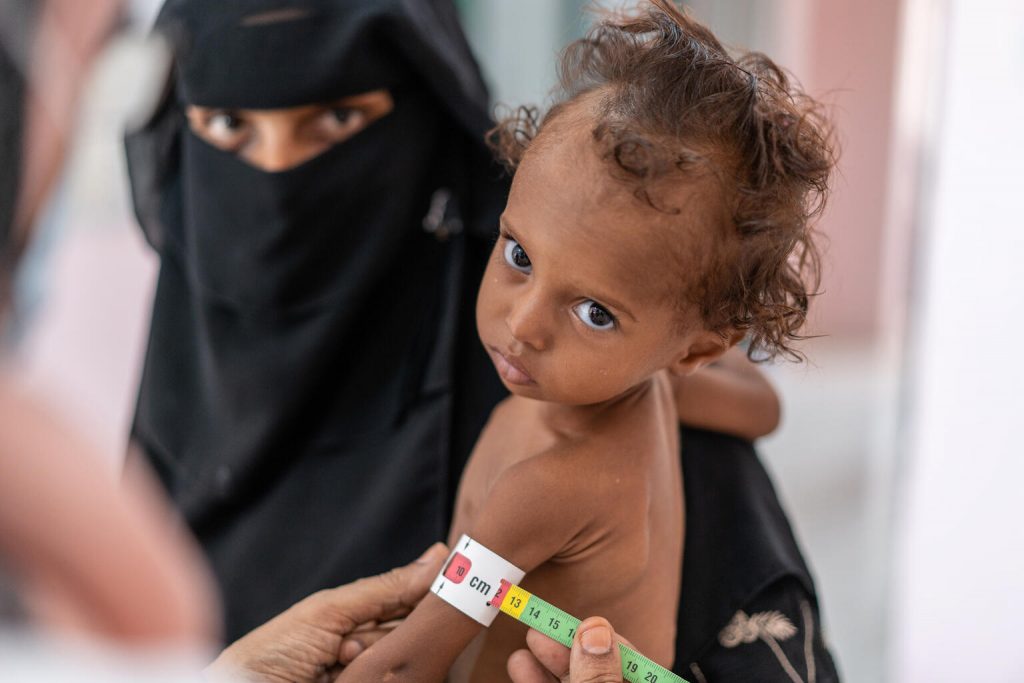As a result of the ongoing conflict in Yemen, war in Europe, climate change and COVID-19, more than 2 million children are suffering from malnutrition in Yemen.
The situation is now so bad that nearly all of Yemen’s children – 4 out of 5 – need urgent humanitarian help to survive.
With one child dying every 10 minutes in Yemen, learn how malnutrition is treated and how you can help save children’s lives.
What is Severe Acute Malnutrition?
Severe Acute Malnutrition (SAM) is the most extreme and visible form of undernutrition. Children with SAM are extremely underweight for their height and have severe muscle wastage.

Because their bodies are so weak, undernourished children are more susceptible to childhood illnesses like diarrhoea and pneumonia. In fact, malnourished children are nine times more likely to die than well-nourished children.
Today, malnutrition is the leading cause of death in children under five, but this can be prevented with early intervention and therapeutic food.
How is Malnutrition Diagnosed?
There are a number of ways to identify if a child is suffering from malnutrition, but the most common symptoms include:
- Noticeable weight loss
- Muscle wastage
- Feeling weak and tired
- Low mood
- Increased bouts of illness or infection
Body Mass Index (BMI)
When brought to a medical centre, doctors or nurses will check a patient’s BMI to ensure that their weight is the correct measurement for their height. If the patient is deemed to be underweight, treatment will be advised.
Mid-Upper Arm Circumference (MUAC) Tape
A MUAC tape is a tool used by aid workers and medical practitioners across the world to determine the mortality risk associated with malnutrition.
The tape is considered to be more accurate than weight for height measurements such as BMI. A cost-effective and easy-to-use tool, the MUAC allows anyone to identify if a child is suffering from severe acute malnutrition.
With helpful colour coding, health care providers, based in some of the world’s most remote regions, can easily refer malnourished children for specialised therapeutic feeding programs.

How is Malnutrition Treated?
Ready-to-Use Therapeutic Food (RUTF)
Peanut paste is a tasty, energy-packed paste made from peanuts, oil, sugar, milk powder and vitamin and mineral supplements.
The paste doesn’t have to be mixed with water, which avoids the risk of contamination and it comes ready to eat in sachets. Peanut paste can be given at home, under a caregiver’s supervision, making it extremely easy to use in crisis situations like Yemen.
RUTF is UNICEF’s most effective tool for treating severe acute malnutrition which, every year, threatens millions of children worldwide.

Therapeutic Milk
Therapeutic milk is a special milk used when a child is too weak to swallow RUTF. The milk is rich in nutrients, easy to digest and quickly provides malnourished children with the energy they need to recover.
The milk is fed according to weight in a strict feeding frequency, including during the night, in order to restore the metabolism. At the same time, the child is treated for medical complications such as measles, malaria or diarrhoea.
Help Malnourished Children in Yemen
UNICEF is one of the few humanitarian aid agencies still operational in Yemen. Thousands of children are suffering from severe acute malnutrition and need urgent treatment.
Please support our urgent Yemen appeal by donating now.

